
The City of Toronto is planning to install bioswales in the City-owned right-of-way along select streets in Scarborough.
Bioswales are a type of green infrastructure designed to capture and filter stormwater close to where rain falls, reducing the volume of stormwater that enters the City’s sewer system and improving the water quality of runoff before it makes its way into local streams.
Bioswales in boulevards are gently sloped, linear, vegetated features that collect, treat and temporarily store stormwater runoff. Bioswales are comprised of soil and filtering drainage layers. Plants may be incorporated to reduce the velocity of storm runoff and promote removal of pollutants by filtering and allowing the uptake of stormwater. A rendering of bioswale along the road is illustrated below.
Construction is expected to begin in 2026.
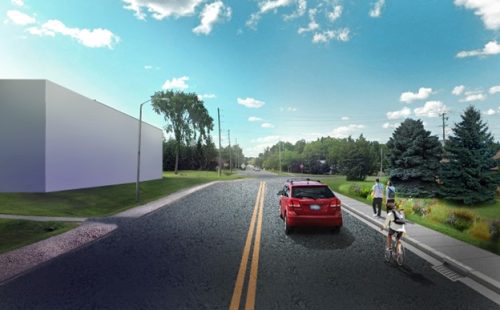
Construction Notices will be posted closer to the date of construction.
The maps below show the streets on which the bioswales will be installed.
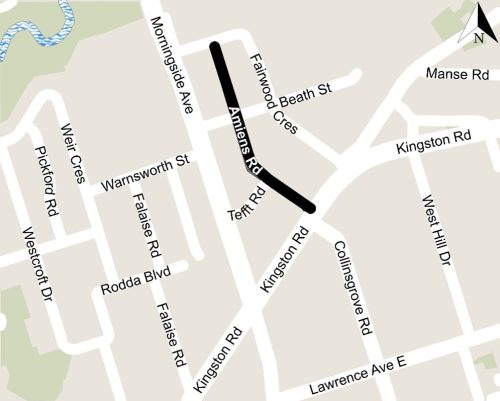
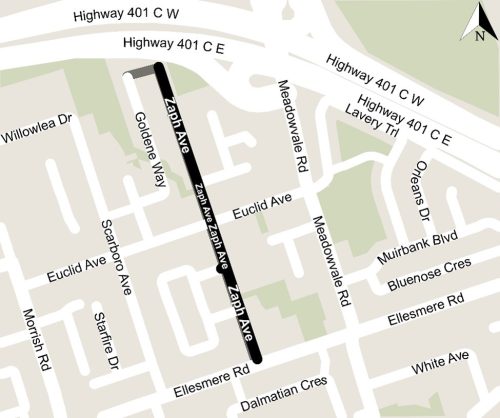
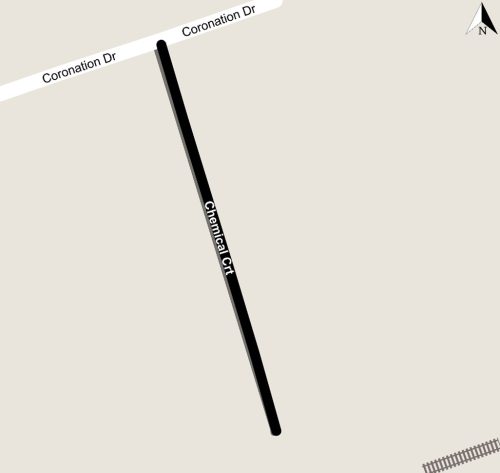
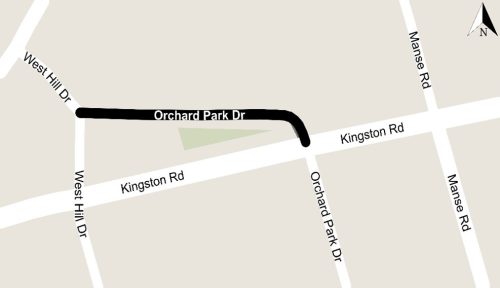
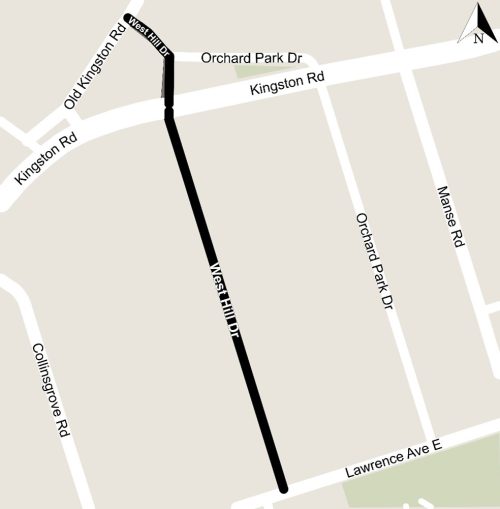
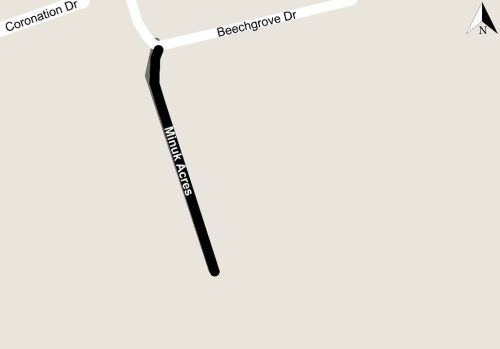
As part of the design of the bioswales, residents along identified streets will have the opportunity to select the type of vegetation that will be installed by the contractor. The options are:
(N) Native hardy species
(C) Cultivar / Hybrid of a native hardy species
(O) Non-native naturalized hardy species
(S) Shrubs and taller growing species – avoid planting in areas where views may be obstructed (e.g. sightlines between pedestrians and vehicles at intersections)
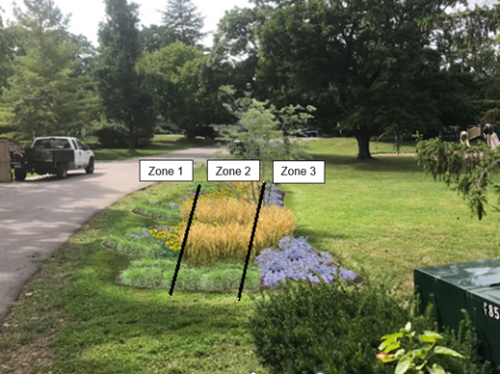
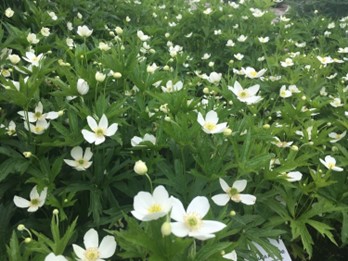
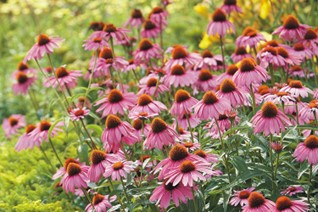
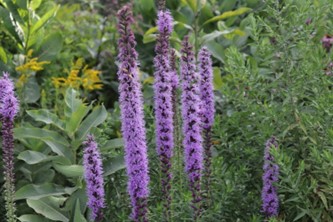
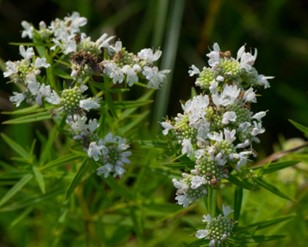
Additional Species:
The perimeter zone provides a transition from the bioswale to the adjacent area. Selected plants thrive in urban conditions (tolerant of salt spray and other pollutants), and are both drought tolerant as well as able to withstand occasional wet conditions.
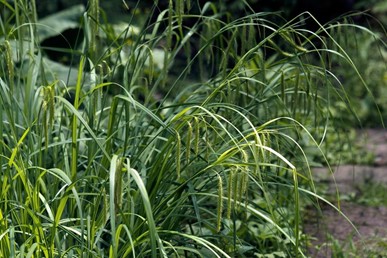
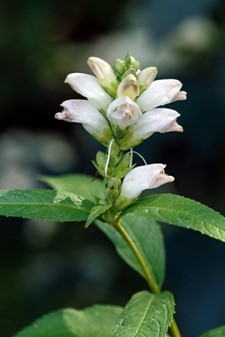
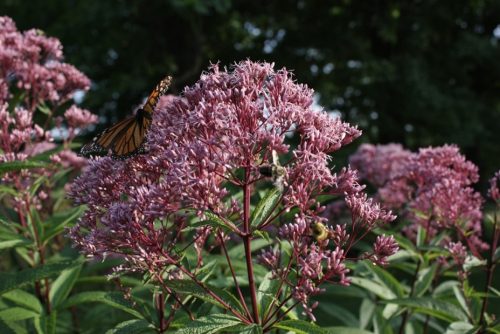
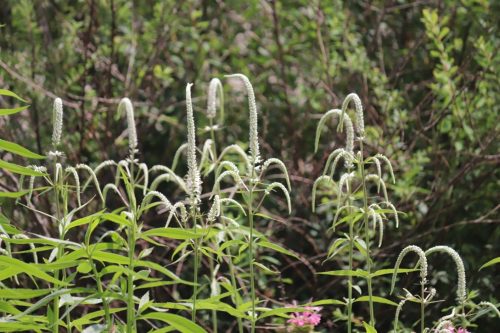
Additional Species:
Planting to the sides of the bioswale are tolerant of wetter conditions and help stabilise the slopes. Plants are selected for visual interest in colour and form, as well as biodiversity and wildlife benefit with species that attract pollinators (bees and butterflies).
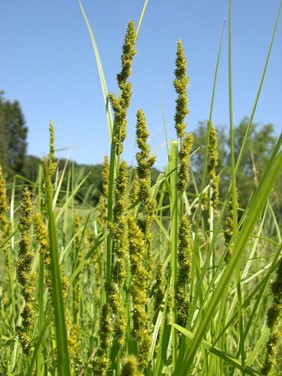
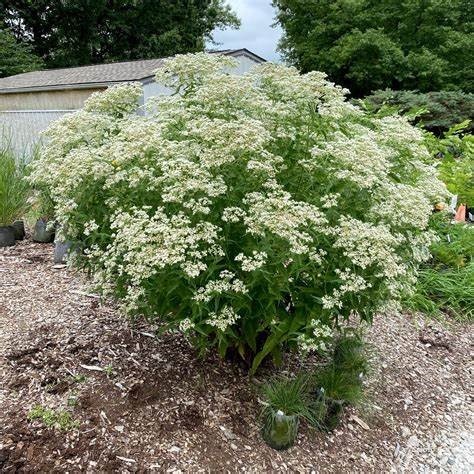
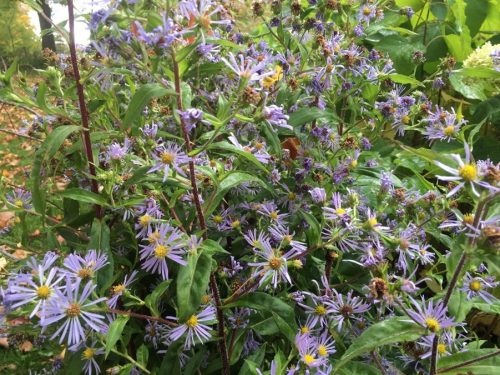
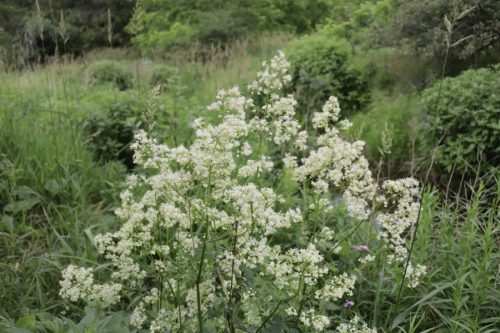
Additional Species:
Plant material for this area must be the most tolerant to temporal flooding and wet conditions. Plants selections are naturally found in or adjacent to wetlands and are native species to Ontario.
Anemone canadensis (Canada Anemone)
H: 0.6m, S: 0.6m (N)
Carex pensylvanica (Oak sedge)
H: 0.3m, S: 0.45m, (N)
Echinacea pupurea (Purple Coneflower)
H: 0.6m, S: 0.6m, (N)
Liatris spicata (Dense Blazing Star)
H: 1.5m, S: 0.3m, (N)
Myrica pensylvanica (Northern Bayberry)
H: 2m, S: 2m, (N)(S)
Pycnanthemum virginianum (Virginia Mountain Mint)
H: 1.2m, S: 0.3m, (N)(S)
Rosa rugosa (Foxy Pavement Rose)
H: 0.75m, S: 0.5m, (C)(S)
Carex crinita (Fringed sedge)
H: 0.9m, S: 0.6m, (N)
Ceanothus americanus (New Jersey tea)
H: 1.5m, S: 0.3m, (N)(S)
Chelone glabra (White Turtlehead)
H: 1.5m, S: 0.3m, (N)(S)
Eupatorium maculatum (Spotted Joe-pye)
H: 1.8m, S: 0.6m, (N)(S)
Myrica gale (Sweet gale)
H: 1.25m, S: 1m, (N)(S)
Rhus aromatica (Fragrant Sumac)
H: 2m, S: 2 – 3m, (N)(S)
Veronicastrum virginicum (Culver’s Root)
H: 1.5m, S: 0.3m, (N)(S)
Acorus calamus ‘variegatus’ (Sweet Flag)
H: 0.6m, S:0.6m, (O)
Carex vulpinoidea (Fox Sedge)
H: 0.9m, S: 0.6m, (N)
Eupatorium perfoliatum (Boneset)
H: 1.5m, S: 1m, (N)
Mimulus ringens (Monkey Flower)
H: 0.9m, S: 0.9m, (N)
Symphyotrichum puniceum (Swamp Aster)
H: 1.5m, S: 0.6m, (N)(S)
Thalictrum pubescens (Tall Meadow-rue)
H: 2.0m, S: 0.9m, (N)(S)
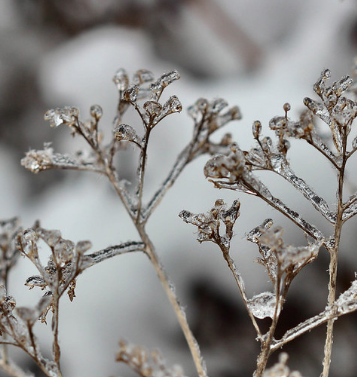

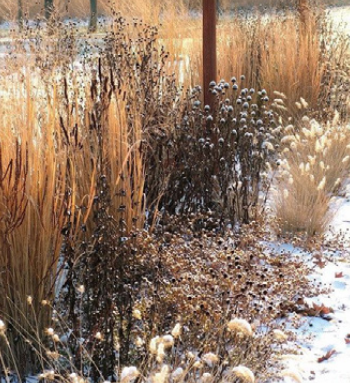
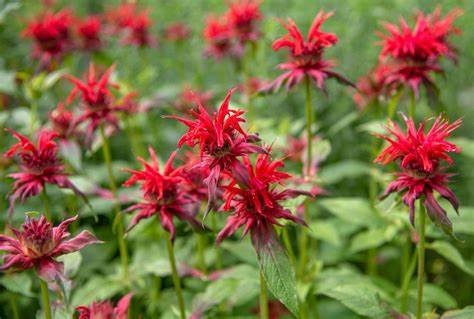
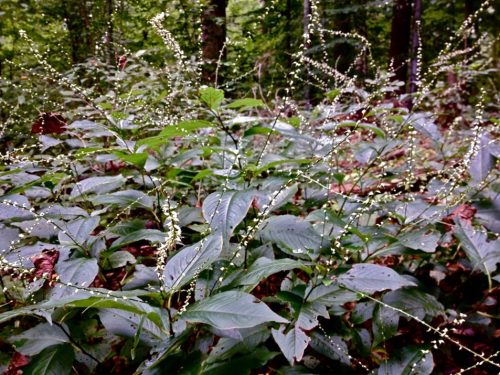
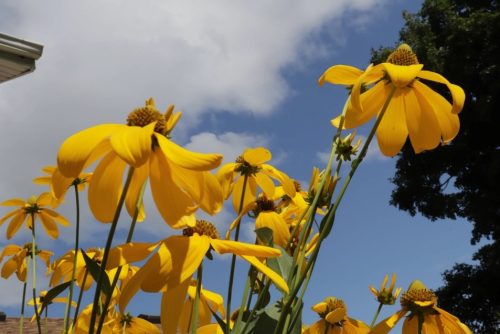
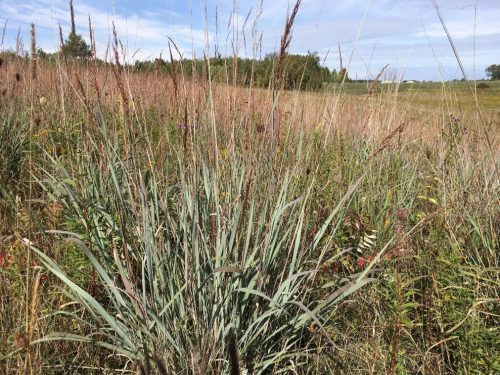
Additional Species:
The perimeter zone provides a transition from the bioswale to the adjacent area. Selected plants thrive in urban conditions (tolerant of salt spray and other pollutants), and are both drought tolerant as well as able to withstand occasional wet conditions.
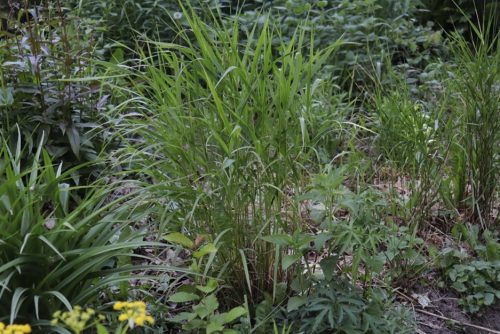
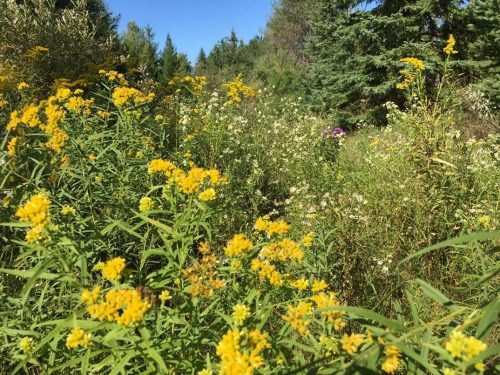
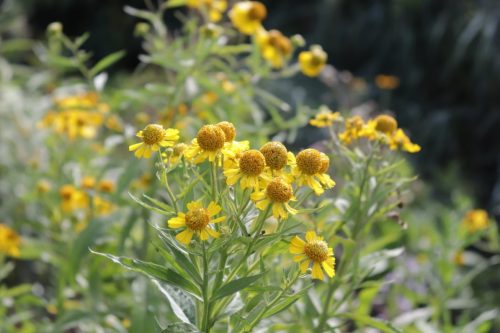
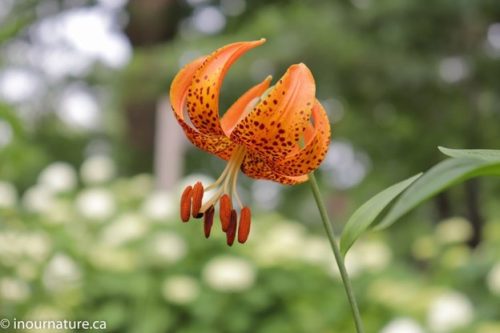
Additional Species:
Planting to the sides of the bioswale are tolerant of wetter conditions and help stabilise the slopes. Plants are selected for visual interest in colour and form, as well as biodiversity and wildlife benefit with species that attract pollinators (bees and butterflies).
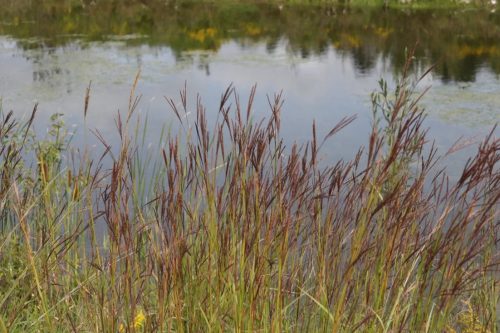
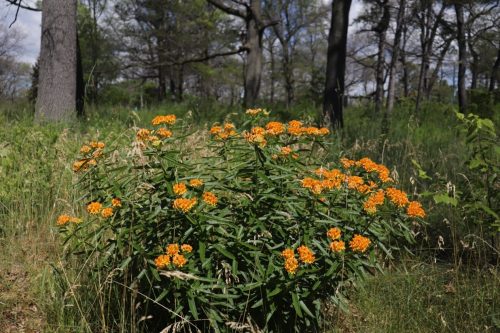
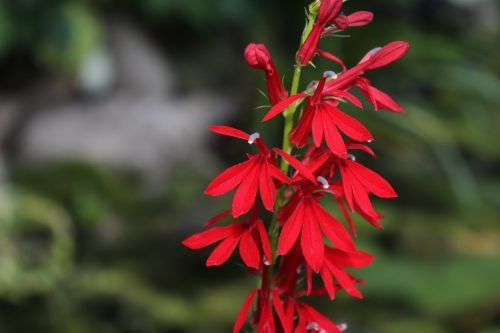
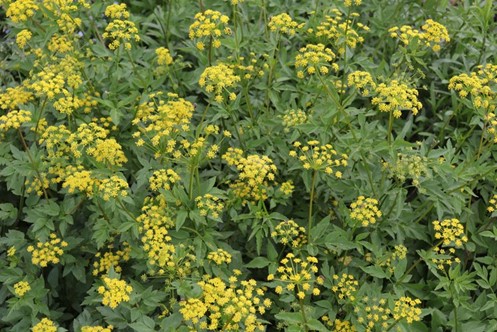
Additional Species:
Plant material for this area must be the most tolerant to temporal flooding and wet conditions. Plants selections are naturally found in or adjacent to wetlands and are native species to Ontario.
Carex pensylvanica (Oak sedge)
H: 0.3m, S: 0.45m, (N)
Ilex verticillata ‘Berry Poppins’ (Winterberry)
H: 1.25m, S: 1.25m, (C)(S)
Monarda didyma (Bee Balm)
H: 0.6m, S: 0.9m, (N)
Myrica pensylvanica (Northern Bayberry)
H: 2m, S: 2m, (N)(S)
Persicaria virginiana (Virginia Jumpseed)
H: 0.9m, S: 1.2m, (N)
Rudbeckia laciniata (Cut-leaved Coneflower)
H: 1.8m, S: 0.6m, (N)
Sorgbastrum nutans (Indian Grass)
H: 1.5m, S: 0.6m, (N)(S)
Elymus viginicus (Virginia Wild Rye)
H: 1.2m, S: 0.3m, (N)(S)
Euthamia graminifolia (Grass-leaf Goldenrod)
H: 1.5m, S: 0.45m, (N)(S)
Helenium autumnale (Sneezeweed)
H: 1.5m, S: 0.9m, (N)(S)
Hyerpicum kalmianum (Kalm St. John’s Wort_
H: 0.90m, S: 0.90m, (N)
Lilium michiganense (Michigan Lily)
H: 1.2m, S: 0.45m, (N)
Pennisetum alopecuroides ‘Cassian’
(Cassian Fountain Grass)
H: 0.6m, S:0.45m, (N)
Rhus aromatica (Fragrant Sumac)
H: 2m, S: 2 – 3m, (N)(S)
Acorus calamus ‘variegatus’ (Sweet Flag)
H: 0.6m, S: 0.6m, (O)
Andropogon gerardi (Big Bluestem)
H: 2m, S:0.6m, (N)(S)
Asclepias tuberosa (Butterfly Milkweed)
H: 0.9m, S: 0.6m, (N)
Carex muskingumensis (Palm Sedge)
H:0.6, S:0.6m, (N)
Lobelia cardinalis (Cardinal Flower)
H: 1.2m, S: 0.3m, (N)
Zizia aurea (Golden Alexander)
H: 0.9m, S: 0.9m, (N)(S)
More information about City of Toronto’s Green Street program can be accessed through Toronto Green Street